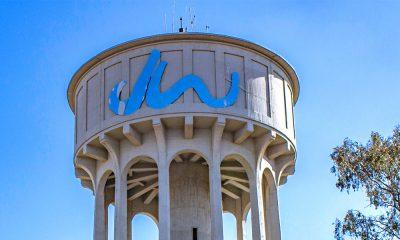411
Johannesburg’s Water Crisis Deepens: Failing Infrastructure Leads to Thousands of Monthly Water Cuts

Johannesburg’s Water Crisis: Thousands of Monthly Water Cuts Expose Failing Infrastructure
Johannesburg is experiencing an escalating water crisis, affecting thousands of residents every month. Years of neglect and an aging water system have led to frequent cuts, putting the city on the edge of a larger crisis. These ongoing disruptions highlight an urgent need for action and investment.
Thousands of Water Cuts Affect Johannesburg Residents
In Johannesburg, water cuts are now part of daily life. Recently, key areas like Midrand and Sandton faced prolonged outages, while neighborhoods like Coronationville struggle almost constantly with low or no water. Community feedback and Johannesburg Water’s reports show an overwhelming number of incidents across the city. These daily disruptions reveal serious issues with the city’s decayed infrastructure and poor maintenance.
Infrastructure Neglect and Lack of Investment
The root cause of Johannesburg’s water crisis goes beyond high water use. Over the past 30 years, the city has prioritized short-term operational costs over long-term infrastructure investments. Maintenance budgets have been cut, and new projects lag far behind the city’s rapid population growth since 1994.
As a result, the water system now loses almost half of its water through leaks before it reaches residents. This massive loss highlights deeper problems that water-saving alone cannot solve. Even Minister of Water and Sanitation, Pemmy Majodina, notes that while high consumption is a factor, the amount lost to leaks reveals a broken system.
Temporary Fixes: Escalating Water Restrictions
To manage water shortages, Johannesburg Water has imposed strict water restrictions. These range from Level 1 (a 15% supply cut) to Level 3 (a 46% cut). If the Integrated Vaal River System falls below 20% capacity, Level 4 restrictions could apply—cutting off water completely. While these restrictions are critical in the short term, they cannot solve the larger infrastructure problems.
The Extent of Johannesburg’s Water Infrastructure Problems
A recent report by Minister Majodina highlights the city’s failing infrastructure. Out of Johannesburg’s 80 reservoirs, 42 have leaks, but only 11 are currently under repair. Additionally, a survey of the city’s 12,100-kilometer pipeline network found 2,396 burst pipes, 6,727 leaking meters, 442 leaking valves, and 259 faulty fire hydrants. These leaks result in billions of liters of wasted water each year, adding strain to Johannesburg’s fragile system.
Current Efforts and Financial Challenges
Johannesburg Mayor Dada Morero has announced efforts to address some of these issues. A new reservoir in Brixton is under construction and will be operational next year, relieving supply pressure in nearby areas. The city is also replacing 685 pressure valves and repairing leaks at major reservoirs and pumping stations.
However, these measures only scratch the surface of Johannesburg’s needs. According to Morero, just fixing the 45 leaky reservoirs will cost an estimated R1 billion, excluding additional repairs for the broader pipe network and pumping stations. Due to budget constraints, the city is seeking alternative funding, but swift action remains crucial.
The Need for a Coordinated, Long-Term Solution
Johannesburg’s water crisis calls for coordinated action across all levels of government. Accountability, transparency, and partnership are essential to prevent a larger disaster. Residents also have a role to play by conserving water and reducing strain on the system. However, these efforts will only succeed if the city addresses the deep-rooted issues within its water infrastructure.
Only with substantial investment and effective leadership can Johannesburg hope to rebuild a reliable water system for the future.


























